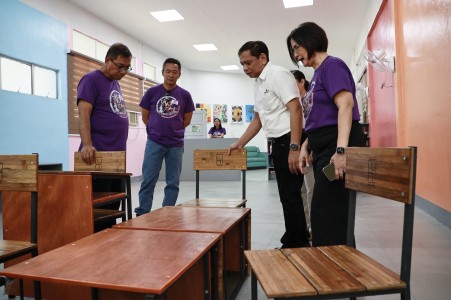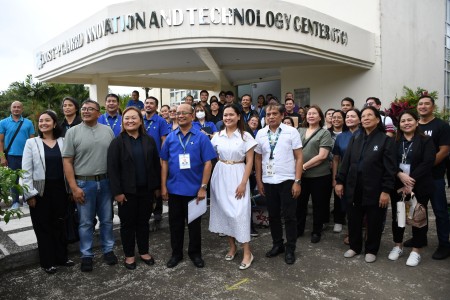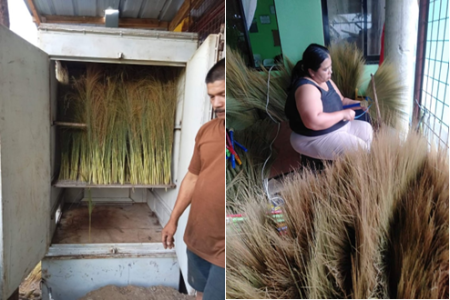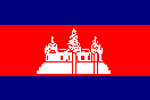DOST-FPRDI FINDS NEW USE FOR INVASIVE ‘LAPNIS’ Philippine | 04/03/2022
The DOST-Forest Products Research and Development Institute (DOST-FPRDI) is now exploring the possibility of using lapnis bast fibers for paper conservation.
Lapnis or paper mulberry [Broussonetia papyrifera (L.) L’Herit ex Vent] is a type of shrub introduced in the Philippines in 1935 as a reforestation species and a source of fiber. Over the years, however, it has come to be known as a pest – thriving uncontrollably and invading vast tracks of idle lands in the country.
“Our initial research showed that lapnis’ strength and long fibers make it a good substitute for imported conservation paper,” said Project Leader Cesar O. Austria.
Paper conservation is the process of restoring and preserving all kinds of important paper-based objects such as archival documents and art works. Made by hand or machine, paper for conservation is used to repair tears, consolidate and give support to strengthen weak and brittle paper artifacts.
Generally, these papers should be strong, insect- and tear-resistant, acid-free and translucent. According to Austria, the country mostly imports these papers from Thailand and Japan.
“The DOST-FPRDI produced at least five different kinds of lapnis handmade papers that were evaluated by a paper conservator. Thin lapnis handmade paper is particularly good as backing material for supporting artwork on paper; as pre-coated lining papers for mending tears; and as hinges for framing art on paper, among others.”
Austria says further studies will be done at the Institute to improve lapnis handmade paper’s color, fiber formation and distribution, and clarity (free from specks, dirt or foreign particles). The DOST-FPRDI also now offers training on lapnis handmade paper production. Inquiries may be sent to the Institute’s Training and Manpower Delivery Services Section at tsd.tmdss@fprdi.dost.gov.ph
Funded by the DOST-Philippine Council for Agriculture, Aquatic, and Natural Resources Research and Development (PCAARRD), the initiative is part of a recently concluded project that studied lapnis’ ability to grow new shoots after being cut down. The project is envisioned to help curb the spread of lapnis in the country— not by killing it off, but by finding possible uses for its wood and non-wood components. ### (Apple Jean C. Martin-de Leon,2022)
















